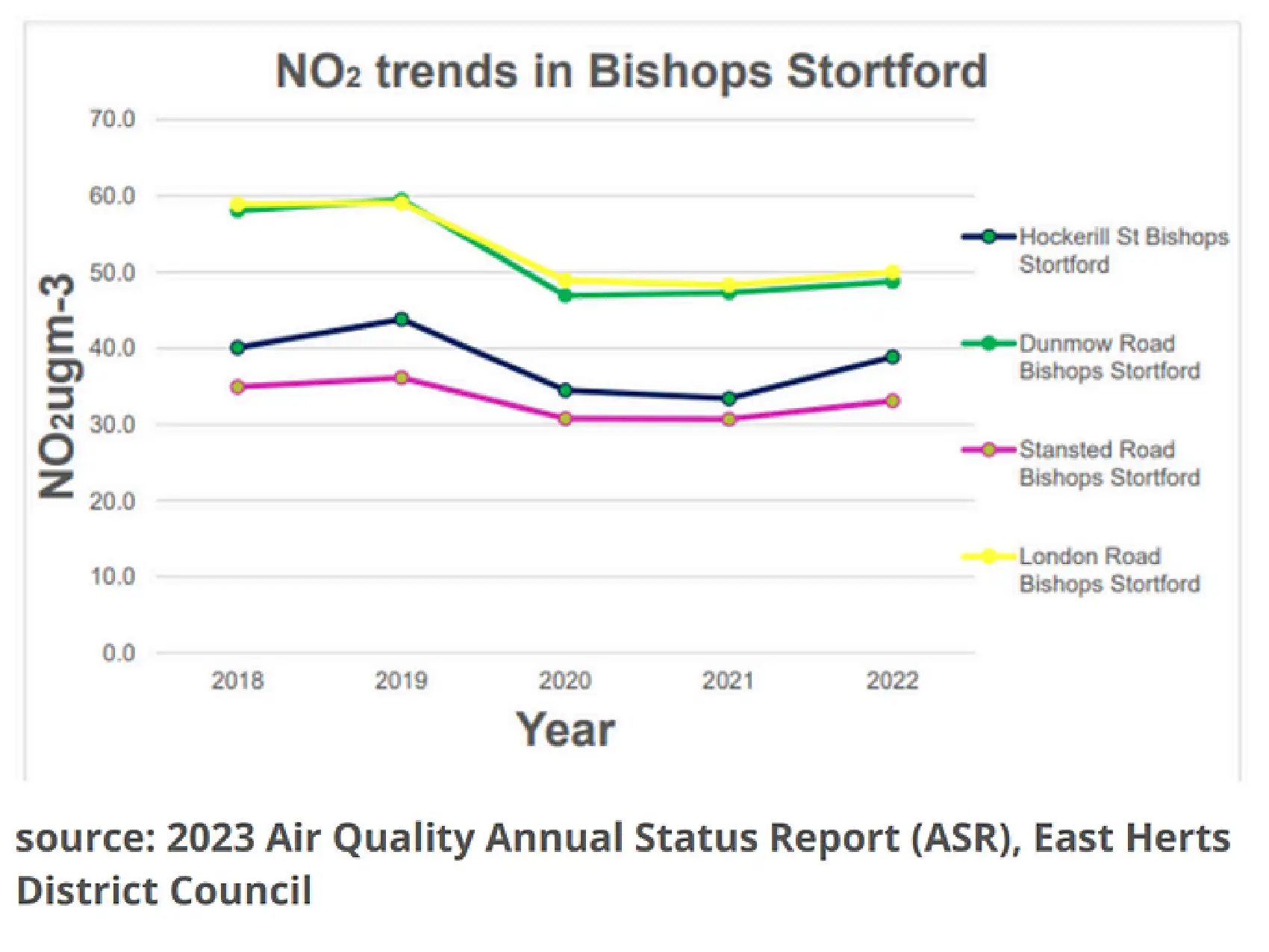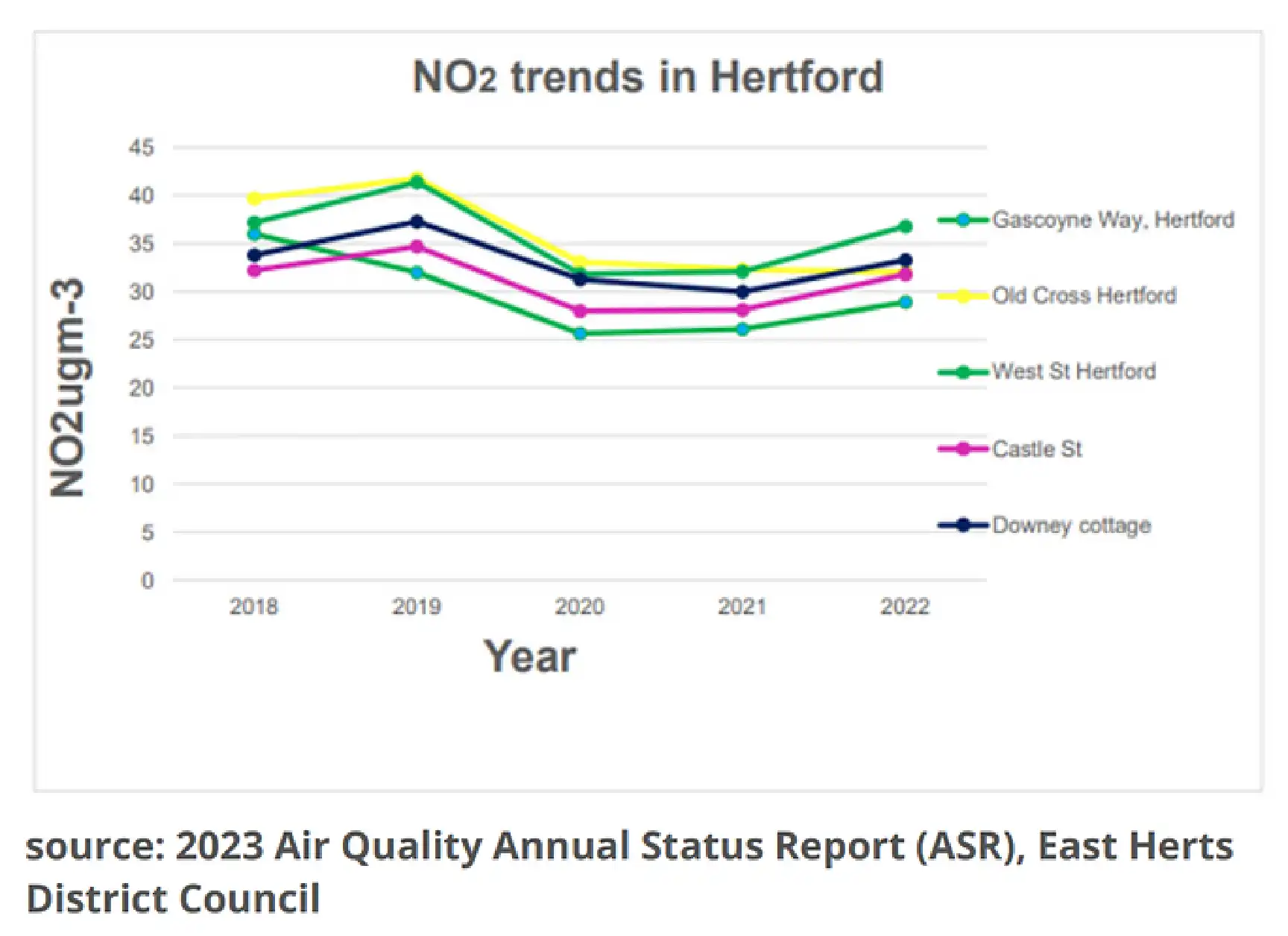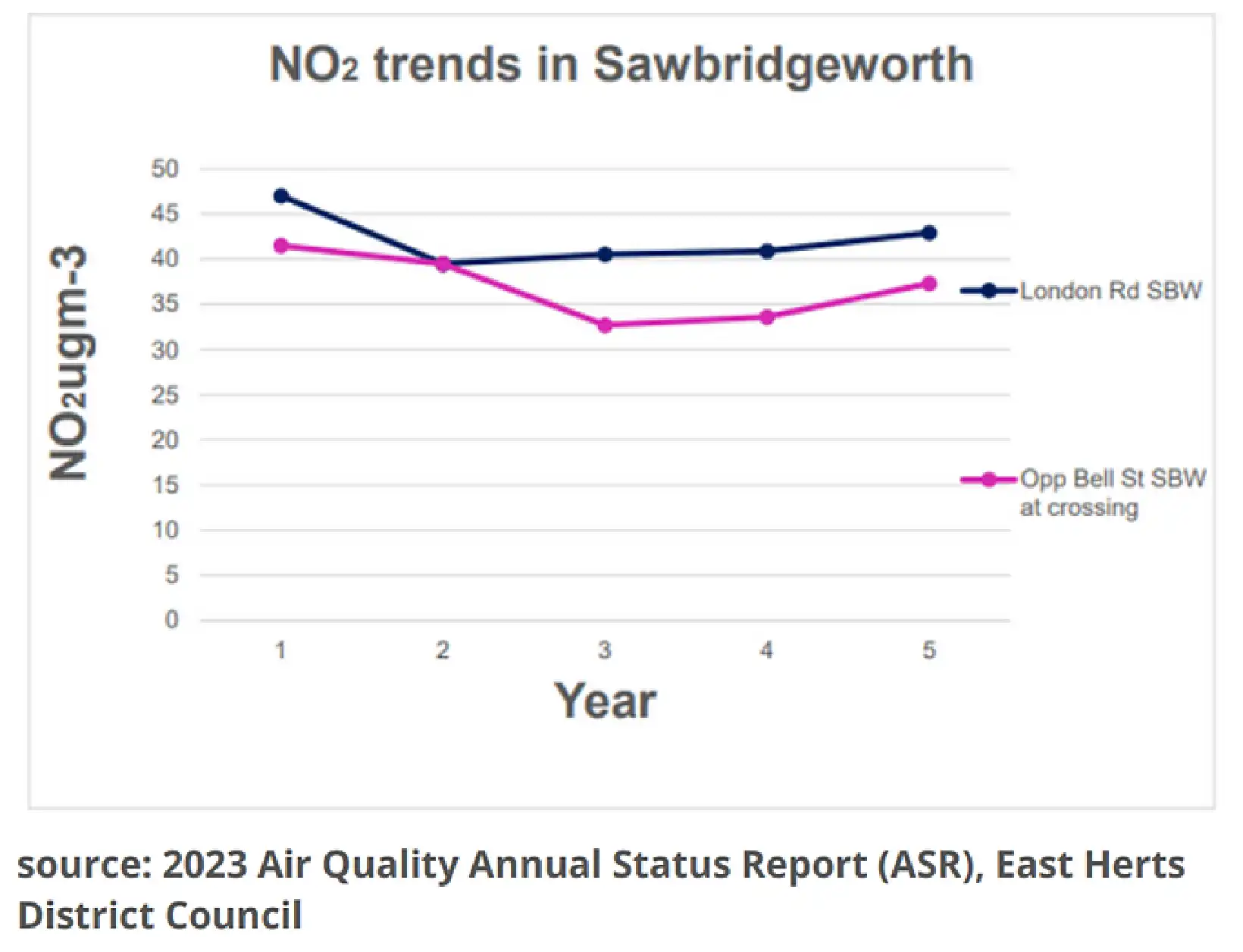Supporting cleaner air in East Herts

East Herts Monitoring Map
What this map shows
Across East Herts we monitor the Air Quality with a combination of Diffusion tubes which provide annual measurements and Automatic monitors which take live measurements.
This map shows both types of monitors. Click to zoom in and you can see the data for each monitor.
East Hertfordshire Air pollution forecast summary
| Wed 17 Dec | Thu 18 Dec | Fri 19 Dec | Sat 20 Dec | Sun 21 Dec |
|---|---|---|---|---|
| 2 | 2 | 2 | 2 | 2 |
| DAQI Scale | |||
|---|---|---|---|
| Low (1-3) | Moderate (4-6) | High (7-9) | Very High (10) |
East Herts Council's Responsibilities
The council’s responsibilities relating to air quality management come from legislation laid out in the UK Air Quality Strategy. Any area within East Herts not meeting National Air Quality Standards is declared as an Air Quality Monitoring Area (AQMA).
Air Quality Management Areas
There are three AQMAs in East Herts: Bishop’s Stortford, Sawbridgeworth and Hertford. The three AQMAs in East Herts have a combination of traffic congestion and road layout that has led to Nitrogen Dioxide (NO2) concentrations being above the UK annual mean air quality objective (40 µg/m3 - micrograms per cubic meter).



What these graphs show
These graphs show that air quality in the three towns reduced in 2020, during the covid pandemic, but are now all on the rise. One site in Sawbridgeworth is exceeding the target, three sites in Bishop’s Stortford are at or above the target and one site in Hertford is close to the target.
It should be noted that the World Health Organisation (WHO) Global Air Quality Guidelines recommend an annual mean concentration of 10 µg/m³ (micrograms per cubic meter), much lower than in the UK.
Improving Air Quality
Where an AQMA is declared, action needs to be taken to reduce pollution levels. An action plan must also be produced to tackle the problem.
Research commissioned by East Herts District Council in 2024 found that there is appetite to improve air quality in the district, including appetite among parents to increase use of Park and Stride, appetite amongst school children to increase active travel and walking to school, and appetite amongst teachers to increase use of car sharing.
Barriers to making change include:
- Lack of cycle confidence
- Road safety concerns
- Infrequent / unreliable buses and trains
- High costs of public transport
- Lack of sustainable travel infrastructure for new housing developments
- Additional time required for active travel vs. car travel
Get air quality alerts direct to your phone
Visit the Hertfordshire and Bedfordshire Air Pollution Alert System to receive air quality alerts straight to your mobile phone.
This free service will be of particular benefit to people with medical conditions that may be affected by pollution, such as asthma, bronchitis and emphysema.